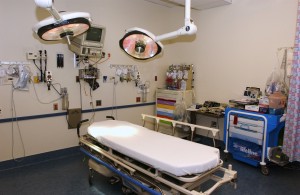 It’s no fun, but it’s a fact of life: people get sick and injured. When you get sick or injured, you will most likely go to a doctor or hospital for treatment. A little known fact is that 100,000 people are killed each year due to medical malpractice. When you present to your local ER or your doctor’s office, you may feel at ease because the person treating you underwent several years of schooling and extensive training. Although doctors and medical professionals have immense amounts of training, they are still human. To err is human, which also applies to medical malpractice.
It’s no fun, but it’s a fact of life: people get sick and injured. When you get sick or injured, you will most likely go to a doctor or hospital for treatment. A little known fact is that 100,000 people are killed each year due to medical malpractice. When you present to your local ER or your doctor’s office, you may feel at ease because the person treating you underwent several years of schooling and extensive training. Although doctors and medical professionals have immense amounts of training, they are still human. To err is human, which also applies to medical malpractice.
Medical malpractice errors cost approximately $5 Billion per year
What a lot of people don’t realize is a doctor, hospital or clinic usually carry medical malpractice insurance. As a practical matter, this coverage will often indemnify healthcare providers if they are sued by someone damaged due to medical malpractice and that injured party is successful with their lawsuit. The insurance may pay all or at least part of the damages to the injured person in the event they are injured due to a medical facility’s negligence. Most medical malpractice errors occur in the operative or patient’s room after a surgical procedure. The second most common places medical malpractice occurs is in the emergency room, labor and delivery ward or at your primary care physician’s office. The third most common place is in the ICU or radiology department.
It can be tough to gauge just how many instances of medical malpractice occur each year. Experts say trial verdicts only account for about 10% of medical malpractice instances each year. Additionally, some states have implemented caps or limits on damages incurred as a result of medical malpractice.
The government only requires reporting of these instances in hospitals or clinics which run on funds allotted to them by the federal government. Non-reporting of these medical errors can pose a huge risk to a patient due to the fact it makes it impossible to research whether the facility is safe.
There are various types of medical malpractice. Some can be somewhat benign and cause little additional injury, while other medical malpractice errors can cause serious injury and death. We will explain the types of medical malpractice errors that occur most frequently.
10 Most Common Medical Malpractice Errors
Technical: A physician or medical professional inadvertently causes medical malpractice by causing damage to another body part during treatment for a primary issue.
Failure to Use Tests: Physician fails to order tests needed to diagnose issue because they believe another issue exists.
Avoidable Delay in Treatment: A physician fails to treat patient for health issue because they wish to monitor the problem before beginning treatment.
Failure to Take Precautions: Medical staff causes further injury to a patient by failing to request assistance when moving or treating the patient.
Failure to Act on Test Results: Physician commits medical malpractice when they fail to note abnormal test results in the medical record and a condition goes untreated.
Inadequate Monitoring After Procedure: Some drugs and procedures can cause serious injury if not the patient is not closely monitored after they are administered.
Inadequate Patient Preparation Before Procedure: Some medications and conditions need to be noted prior to a procedure or serious injury or death can occur.
Inadequate Follow-up After Treatment: Sometimes a patient will call a doctor’s office to request advise on a condition. Often a doctor takes a “wait and see” approach, which can result in serious injury or death.
Avoidable Delay in Diagnosis: At times, some departments of medical staff may not be available when the doctor is treating the patient. Doctors often wait until the staff needed arrives for their scheduled shift. This delay can cause serious injury or death, resulting in medical malpractice.
Improper Prescription Dose or Method of Use: A doctor prescribes the incorrect dosage of medication to a patient or does not fully address any possible interactions the medication will have with prescriptions the patient is already taking.
Now that you know what medical malpractice is and you understand the different types of negligence involved with an injury of this kind, you may be able to make more informed decisions about your medical care. If you or someone you know believes you have been affected by a medical error of any kind, please call our office today at 314-862-7222 to discuss your legal rights.
